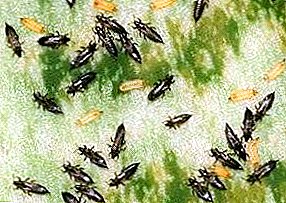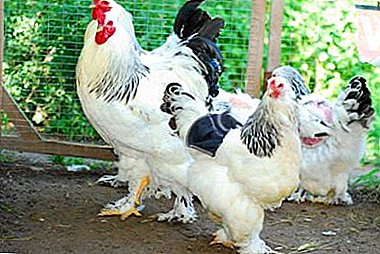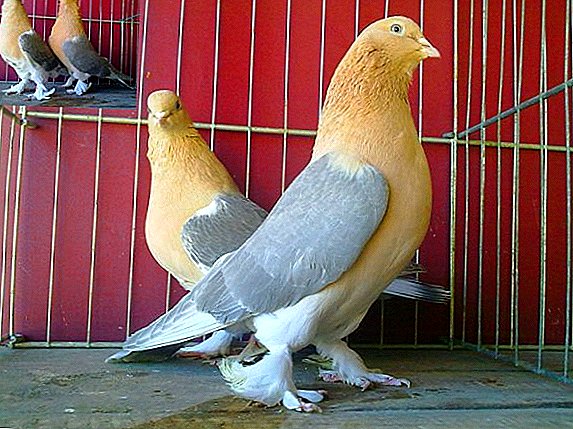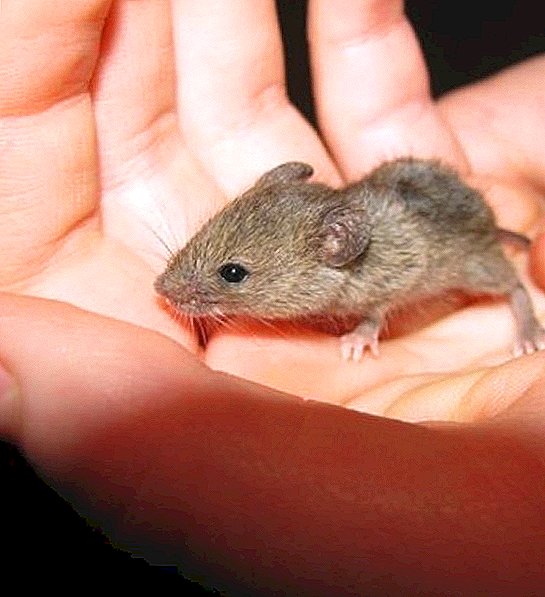 Like all pets, rabbits get sick from time to time. Among a number of possible diseases, a special group consists of so called neoplasms or simply cones. In rabbits, this symptom can be accompanied by various ailments, so it is important to timely diagnose and be examined by a veterinarian in order to know what treatment is needed. What a bunny in a rabbit can testify to, how to get rid of it, and whether it is worth doing it - let's talk today in more detail.
Like all pets, rabbits get sick from time to time. Among a number of possible diseases, a special group consists of so called neoplasms or simply cones. In rabbits, this symptom can be accompanied by various ailments, so it is important to timely diagnose and be examined by a veterinarian in order to know what treatment is needed. What a bunny in a rabbit can testify to, how to get rid of it, and whether it is worth doing it - let's talk today in more detail.
What is a bump
In humans, in animals, a lump is a tumor in the form of a rounded bulge, a tubercle appearing on the skin or in the body. It is often hard to touch, usually without hair or with sparse hairs. There are many reasons for the appearance of cones, and treatment is prescribed depending on them.  For the diagnosis of the disease of no small importance is the place in which it originated.
For the diagnosis of the disease of no small importance is the place in which it originated.
Read about how to treat: cysticercosis, stomatitis, Pododermatitis, flatulence, viral hemorrhagic disease, conjunctivitis and pasteurellosis in rabbits.
What areas of the body are most common
A bunny rabbit can occur in different areas of the body:
- on the head: cheeks, under the eye, near or in the auricle;
- on the body: paws, neck, abdomen.

Causes
The reason for the appearance of cones can be various factors:
- injuries: from a blow or collision a solid bump can easily arise on different parts of the body;
- hidden fractures: another kind of physical damage that was not detected in a timely manner often transforms into a bump when an incorrect bone merging occurs;
- substandard food or unbalanced nutrition: disturbances in the diet of rabbits sometimes manifest themselves in a similar way;
- heredity: in this case, the lump is rarely harmful to the health of the pet;
- infection in the body: this can occur through insect bites, contact with an already infected individual, feeding on spoiled feed;
- tumors both benign and malignant.

What may be hiding under the bump
Let's see in more detail what dangers a lump in a rabbit can indicate.
Abscess
Abscess - suppuration that occurs at the site of impact or injury in active rabbits. No matter how hard the owners try, it’s constantly impossible to maintain sterile cleanliness in the rabbit, which means that contamination and bacteria get into the damaged area, causing it to rot.
We recommend you learn how to treat an abscess in rabbits.
The natural immunity of the animal is trying to cope with the threat, but if the abscess grows with time, it means that attempts are unsuccessful.  In fact, a lump abscess protects the body to a certain point, accumulating in itself, as if in a capsule, pus and toxins. However, if you do not carry out timely treatment, then its shell will burst, and blood infection will begin.
In fact, a lump abscess protects the body to a certain point, accumulating in itself, as if in a capsule, pus and toxins. However, if you do not carry out timely treatment, then its shell will burst, and blood infection will begin.
Rabbit abscess most often occurs due to:
- dental diseases (on the chin);
- insect bites;
- skin punctures, dissections by grass stems, sharp stakes, hedges.
Important! It is important as soon as possible to show the pet to the veterinarian. The specialist will determine the cause of the abscess and be able to prescribe the necessary treatment.
Identify an abscess can, if you look closely to the symptoms. In a rabbit with an abscess:
- during palpation with fingers, a slightly mobile bump is groped;
- most often such a lump (no more grapes) is found under the jaw, at the groin or near the base of the ears;
- apathy and lethargy in the later stages;
- loss of appetite, and then weight;
- body combing As the abscess itches, the rabbit begins to rub against the surface and the corners in order to quench the itch.
 Apathy in the rabbit - one of the symptoms of an abscess
Apathy in the rabbit - one of the symptoms of an abscessFlux
Rabbit flux is an infectious disease that occurs when the oral cavity is damaged and manifests as the formation of tartar. It is precisely him, like a cone, that can be probed outside a rabbit muzzle.
Accompany flux following symptoms:
- lack of appetite in the animal;
- poor sleep;
- teeth may loose;
- a putrid odor from the mouth appears;
- salivation sometimes increases;
- The rabbit often does not touch the jaws to avoid pain.
 Lack of appetite in the rabbit, as a symptom of flux
Lack of appetite in the rabbit, as a symptom of fluxTumor
By its nature, a tumor is a pathology, which occurs due to uncontrolled cell division in tissues or organs that form new growths of various shapes and sizes. They usually grow on the skin or internal organs.
Agree that rabbits should receive the most nutritious and healthy feed. We advise you to read about when and how to feed eared animals at home, as well as consider the feeding habits of rabbits in winter.
Similar "bumps" are divided into two types:
- benign;
- malignant.
- the former are much smaller than the latter;
- benign do not grow;
- they do not have metastasis.
 Besides the presence of the lump itself, a problem may indicate:
Besides the presence of the lump itself, a problem may indicate:- sharp weight loss rabbit;
- pet's refusal of food, water;
- dull coat;
- pallor of mucous membranes and skin;
- breathing problems;
- cardiopalmus;
- liquid discharge from natural openings.
Did you know? Rabbits are the only animals that can die of fright.
Myxomatosis
Another extremely unpleasant and dangerous disease is myxomatosis in rabbits.
This is an infectious viral ailment, accompanied by purulent conjunctivitis, swelling in the head, external genitalia, and the appearance of nodules on the skin.  You can catch them:
You can catch them:
- from already sick animals;
- through insect bites (mosquitoes, ticks).
Consider in more detail all the features of the treatment of myxomatosis in rabbits at home.
Symptoms of myxomatosis are extremely unpleasant:
- first, redness appears in the form of spots near the eyelids, ears;
- further develop conjunctivitis, mucous discharge from the eyes;
- nodules appear on the body;
- breathing becomes difficult, pneumonia develops over time.
 Difficult breathing, as one of the symptoms of myxomatosis in a rabbit
Difficult breathing, as one of the symptoms of myxomatosis in a rabbitHow to confirm the diagnosis
An accurate diagnosis is determined only by a veterinarian after a thorough examination, which, if necessary, includes:
- rabbit torso palpation;
- Ultrasound;
- histological examination;
- sampling materials for analyzes.
Important! Only after a detailed study, the veterinarian will diagnose and prescribe treatment.
How to treat
Depending on the disease, treatment methods are different. Let's look at how to act in the most difficult cases.
External abscess
It is best to work with an abscess specialist.
The veterinarian will professionally remove or clean the cavity with pus, and then prescribe a course of antibiotics to restore. Also, the doctor will tell you how to properly care for the recovering patient. Usually, such care consists of washing the wound with a solution of Rivomil or weak manganese until the discharge ceases.  In extreme cases, if it is not possible to seek help from a specialist, cleaning can be done independently.
In extreme cases, if it is not possible to seek help from a specialist, cleaning can be done independently.
For this:
- First, with a sharp knife (scalpel) make a puncture in the upper part of the growth. Wipes will be needed if the pasty contents of the abscess (white-yellowish tint) begin to flow out of the incision. It is necessary to completely clean the cavity of pus, for which you can slightly squeeze it.
- After cleaning, rinse the pocket thoroughly. A syringe aspirator or an ordinary tool without a needle is suitable for this. Manganese, Ridomyl or saline are used in it. The washing will take a lot of time, because the purulent pasty mass will be badly removed from the pocket.
- When the process is successfully completed, the wound surface is necessary, the skin around it is treated with iodine, and then an antibiotic ointment is used, for example, Levomekol or erythromycin ointment. Carefully apply it to the cleaned cavity to avoid further infection.
- To protect the wound, we apply a gauze bandage for a day or two.
- After removing the dressing, we carefully examine the wound: if there is no strong redness, no pus is released, then we leave it open for further healing.
- Do not forget to periodically glance at the place of the former abscess. Sometimes over time, an abscess reappears on the site of an abscess. It can be removed only by removing the pre-crust, softened with saline or ointment. Then the washing procedure is repeated again.
- If the healing goes its own way, then stimulate it, lubricating periodically with Vishnevsky ointment or sea buckthorn oil.
Flux
At home, flux can not be removed, it must be entrusted to a specialist. Depending on the situation, it is solved in several ways:
- opening an abscess;
- removal of a tooth or tartar.
Did you know? The physiology of rabbits provides a special way to position the eyes, in which they perfectly see what is happening behind.
After the wound is washed with a disinfectant, the veterinarian prescribes a number of antibiotics to prevent the spread of infection. 
Tumor
Treatment of tumors in rabbits depends on their type, timing and location.
Whenever possible, veterinarians try to surgically remove a tumor to avoid further complications. This applies to benign tumors, since they can transform into malignant ones.
It will probably be useful for you to learn how to remove fleas and lichen in rabbits.
As for malignant tumors, it is useless to fight them. The body of rabbits is not able to transfer treatment with drugs after such an operation. Therefore, when detecting malignant tumors, euthanasia is used. 
Myxomatosis
If myxomatosis is confirmed, then the consequences can be serious both for a particular compound and for the whole region. When it is detected in some cases, even quarantined.
As for the treatment of one particular rabbit, it is carried out on the basis of the recommendations of the veterinarian and may look as follows:
- daily injections of Gamavit (2 ml) subcutaneously for 2 weeks;
- receiving Baytril (1 ml per 10 kg of mass) for 5 days;
- Fosprenil injections (1 ml) until complete recovery, and then a few more days;
- watering the rabbit with Ringer's solution;
- treatment of cones with alcohol solutions of iodine and Fukortsin;
- To facilitate breathing, use drugs for a cold.
Did you know? Rabbits make up to 120 chewing movements per minute.
Treatment of myxomatosis is a long and complicated process. To avoid it, it is better to vaccinate the livestock in a timely manner.  Cones in rabbits occur quite often, but the reasons for them may be completely different. The owner of the pet, it is important to notice changes in the appearance and well-being of your pet in order to prevent serious consequences. Therefore, periodically inspect your rabbits and monitor the purity of their cells, then infections and viruses will not have a favorable environment for reproduction.
Cones in rabbits occur quite often, but the reasons for them may be completely different. The owner of the pet, it is important to notice changes in the appearance and well-being of your pet in order to prevent serious consequences. Therefore, periodically inspect your rabbits and monitor the purity of their cells, then infections and viruses will not have a favorable environment for reproduction.












